The Death of Rock: The Chronology
1915 - The Forties
Artists are listed alphabetically within year of demise. Entries are available for the following years. Feel free to scroll, or click the year and skip to those entries.
Key
- * denotes induction into the Rock & Roll Hall of Fame.
- # indicates induction into the Country Music Hall of Fame.
- ^ symbolizes induction into the Blues Hall of Fame.
1915
- Fanny Crosby
- (Frances Jane Crosby), arteriosclerosis and a cerebral hemorrhage. She was 94. Blind from childhood, Crosby wrote over 8,000 hymns and gospel songs and more than 1,000 secular poems, four books of poetry, and two best-selling autobiographies. She also composed The Flower Queen, the first secular cantata by an American composer. She was one of the best-known women in the country. In 1843, she joined a group of lobbyists in Washington, D.C. in support of education for the blind. She read a poem in the United States Senate, becoming the first woman to speak there. Crosby played her hymn, "Safe in the Arms of Jesus", at President Ulysses S. Grant’s funeral. She was inducted into the Gospel Music Hall of Fame in 1975. (Crosby's advanced age would normally preclude her from entry into The Archive, but considering her achievements, and more importantly, the fact that I was able to visit and take photos of her final resting place, I included her. She is buried in Mountain Grove Cemetery in Bridgeport, Connecticut.)
- Scott Joplin
- dementia paralytica, the result of suffering most of his life with syphilis. He was 49. The "King of Ragtime" composed "Treemonisha," the first grand opera by an African American. In 1973, his music was featured in the film, "The Sting," which won an Academy Award for its score. In 1976, Joplin was awarded a citation for his contributions to American music. "Maple Leaf Rag," "The Entertainer"
- ^Blind Lemon Jefferson
- (Lemon Henry Jefferson). Reports about his death are conflicting; the most popularly circulated stories have Jefferson either freezing to death or suffering a heart attack while disoriented in a Chicago snowstorm. No death certificate has ever been found. Jefferson was one of the earliest blues artists to record, logging over a hundred titles between 1926-1929. Jefferson was between 32 and 37 years old at the time of his death. In addition to his cause of death and age, Jeffereson's exact burial place is also a mystery. The general area of his final resting place is marked in what is now Blind Lemon Memorial Cemetery in Wortham, Texas. He was inducted into the Blues Hall of Fame in 1980. "Matchbox Blues," "See That My Grave is Kept Clean," "Easy Rider Blues," "Jack O'Diamonds"
- Bix Beiderbecke
- (Leon Beiderbecke), alcoholic seizure. The official cause of death was pneumonia and edema of the brain. He was 28. Beiderbecke was a popular coronetist with a distinct New York sound, standing apart from the New Orleans jazz that dominated the era.
- Carlos Gardel
- plane crash. He was 44. Gardel enjoyed notoriety in Argentina as part of a folk-singing duo. In the 1920s, he went solo with his "tango singing," and this brought him international fame. Gardel was killed when the Ford Tri-Motor airplane he was travelling in collided in midair with another Ford Tri-Motor plane over Columbia. Fans grieved from New York to Puerto Rico, and a woman in Havana committed suicide. The singer's body made the journey to its final resting place in Buenos Aires, traveling first to Colombia, New York and Rio de Janeiro so that fans could pay respects. To this day, a devoted following keeps the legend alive, playing his music daily, placing a lit cigarette in the hand of the life-sized statue at his tomb and keeping his films in circulation. "Por Una Cabeza," "Cuesta Abajo," "Volver"
- George Gershwin
- brain tumor. He was 38. Astounding American composer who won a Pulitzer for the musical comedy "Of Thee I Sing." "Rhapsody in Blue," "An American in Paris," "Porgy and Bess"
- *^Bessie Smith
- automobile accident; she was 43. "Empress of the Blues," it is believed she was coached by "Mother of the Blues," Ma Rainey (see 1939). Two versions circulate regarding Smith's death. The first states that Smith's vehicle slammed into a parked truck. A doctor saw the accident and stopped to help the singer, whose arm was nearly severed. Before he could move her to his vehicle, hers was struck by another car. Smith died later that day from her injuries. Another version has Smith's vehicle being hit head-on by a truck. Her arm was practically severed, but she was denied care at several "whites-only" hospitals. When she finally arrived at a "coloreds-only" hospital she had lost too much blood and died. She lay in an unmarked grave until 1970, when Janis Joplin (see 1971) and Juanita Green, Smith’s former maid and later a chapter-head of the NAACP, donated money for a headstone. Smith was inducted into the Blues Hall of Fame in 1980 and the Rock & Roll Hall of Fame in 1989. "Down Hearted Blues," "Backwater Blues," "St. Louis Blues"
- *^Robert Johnson
- (Robert Leroy Johnson), poisoned; he was 27. Father of the Blues, "King of the Delta Blues". Legend has that Johnson was living in Mississippi with no outstanding talent for guitar playing, but a strong desire to master the blues. He took his guitar to a crossroads at midnight, where he was met by a mysterious man who took the guitar and tuned it. Thereafter, Johnson possessed the unparalleled ability to play blues guitar. He had sold his soul to the devil in order to be the greatest bluesman. Johnson was infamous for his womanizing; while in Mississippi, he was supposedly given a bottle of whisky that had been poisoned by a jealous husband. In 2003, Rolling Stone magazine named Johnson one of the greatest guitarists of all time (ranking #5). He was inducted into the Blues Hall of Fame in 1980 and the Rock & Roll Hall of Fame in 1986. He was also honored on a United States postage stamp. Read about how Robert Johnson started the "Curse of 27". "Crossroads," "I Think I'll Dust My Broom," "Hellhound on My Trail"
- *^Ma Rainey
- (Gertrude Pridgett), heart attack at the age of 53. Rainey was "Mother of the Blues." She was the first woman to incorporate blues into vaudeville, minstrel and tent shows, and it is believed that she coached a young Bessie Smith (see 1937) while touring with the Rabbit Foot Minstrels. Rainey was inducted into the Blues Hall of Fame in 1983 and the Rock & Roll Hall of Fame in 1990. "C.C. Rider," "Ma Rainey's Black Bottom," "Broken Hearted Blues"
- *Jelly Roll Morton
- (Ferdinand Joseph Lematt), heart trouble and asthma. He was 50. Morton, who started his career playing in whorehouses, was arguably the first great jazz pianist. Prior to his success as a musician, he was employed as a gambler, pool shark, vaudeville comedian, and pimp. He attributed his failing health to a voodoo curse. He was inducted into the Rock & Roll Hall of Fame in 1998. "Original Jelly Roll Blues," "Dead Man Blues," "Black Bottom Stomp," "Red Hot Pepper"
- Fats Waller
- (Thomas Wright Waller), pneumonia. He was 39. Waller was a legendary jazz pianist and composer. Two of his compositions, "Honeysuckle Rose" and "Ain't Misbehavin'" are in the Grammy Hall of Fame. In 2004, "Ain't Misbehavin'" was also listed in the National Recording Registry by the Library of Congress.
- *Orville "Hoppy" Jones
- brain hemorrage. He was 39. Jones was the bass vocalist for the vocal quartet, The Ink Spots. According to a letter to the editor of "Good Old Days Magazine" (June 2009), a couple helped some stranded motorists near Seneca, Kansas. As a thank you, the group gave the couple a photo of themselves - The Ink Spots. A few weeks later, a color television arrived, courtesy of the vocal group. The Ink Spots were inducted into the Rock & Roll Hall of Fame in 1989 and the Vocal Group Hall of Fame in 1999. "If I Didn't Care," "I Don't Want to Set the World On Fire," "Maybe"
- Glenn Miller
- (Alton Glenn Miller), plane disappeared on a flight over the English Channel during World War II. Miller was the internationally popular leader of The Glenn Miller Orchestra and The Army Air Force Band. He was also a former member of the Dorsey Brothers Orchestra (see Tommy, 1956 and Jimmy, 1957). Miller was in England, waiting to go to a Christmas concert that he was scheduled to perform for Allied soldiers in Paris. His flight was repeatedly delayed because of bad weather. On 15 December 1944, he boarded a single-engine Noorduyn UC-64A Norseman at the invitation of Lieutenant Colonel Norman Baessell. Supposedly, Baessell was denied authorization to fly that day because of the foul weather, and the pilot, John Stuart Morgan, was not properly qualified for instrumemnt flying. Additionally, Norseman aircraft were notorious for having their carburetors freeze in cold weather (resulting in engine stall). It is speculated that the frigid weather caused the plane's carburetor to freeze, which stalled the engine, sending the plane and its occupants plummeting into the English Channel. The news of Miller's "disappearance" was not announced until 9 days later, on 24 Decemeber 1944, possibly because the flight was unauthorized and it was not clear who was involved. Glenn Miller was 40. "In the Mood," "Moonlight Serenade," "Tuxedo Junction," "(I've Got a Gal in) Kalamazoo," "Chattanooga Choo Choo"
- #Vernon Dalhart
- (Marion Try Slaughter, Sr.), succumbed to his second heart attack; he was 65. Dalhart was a pioneering country musician. In the 1920's he released "Wreck of the Old 97", which was the best-selling single in its time, and was the biggest-selling non-holiday record in the first seventy years of recorded music. "The Prisoner's Song" was estimated to be a #1 hit for 12 weeks in 1925-26. His lifetime recording sales is estimated at 70 million copies. In 1998, "The Prisoner's Song" was honored with a Grammy Hall of Fame Award and the Recording Industry Association of America named it one of the Songs of the Century. He was inducted into the Nashville Songwriters Hall of Fame in 1970, into the Country Music Hall of Fame in 1981 and into the Gennett Records Walk of Fame in 2007. (Technically, Dalhart is too old for inclusion in The Archive, but he has an entry because of his status as a Country pioneer and because he worked and was buried in my hometown.)
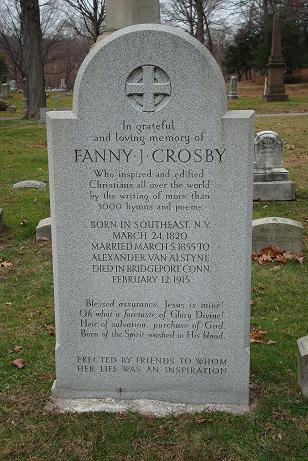

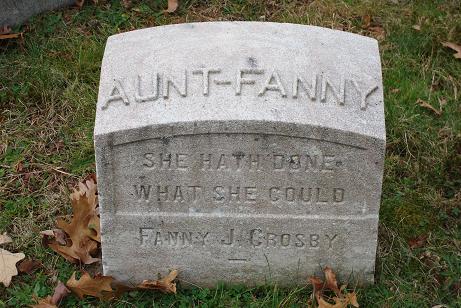
Fanny Crosby's memorials.
1917
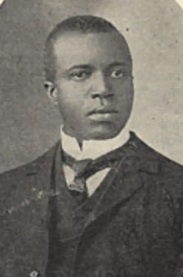
Scott Joplin
1929
1931
1935
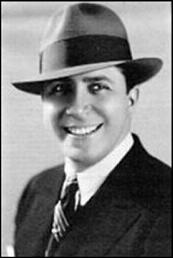
Carlos Gardel
1937
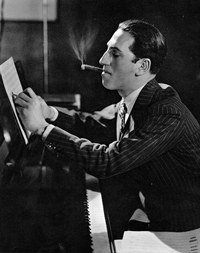
George Gershwin
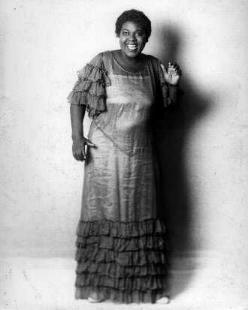
"Empress of the Blues," Bessie Smith
1938
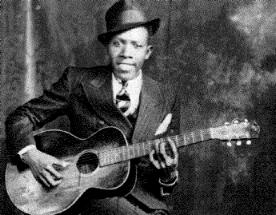
Robert Johnson
1939
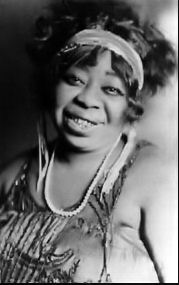
Ma Rainey
1941
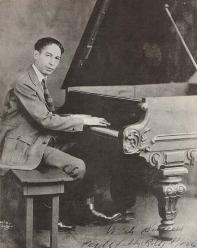
Jelly Roll Morton
1943
1944
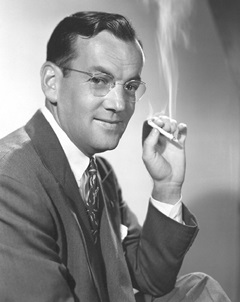
Glenn Miller
1948
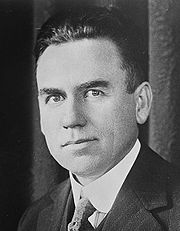
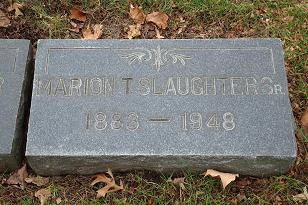
Vernon Dalhart and photo I took at his grave.

